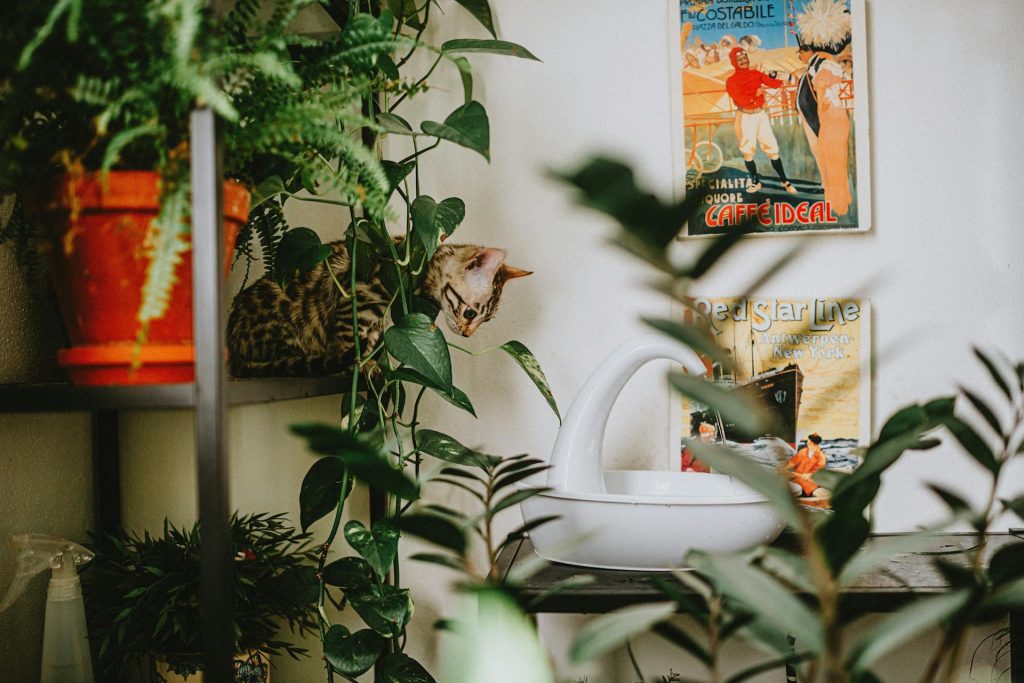
The Ultimate Guide to Apartment Cat Care: Routines, Enrichment, and Survival Hacks for Small Spaces
Living in an apartment with a cat can be a cozy, fulfilling experience—if you know how to tailor your space and routine to your feline’s needs. Whether you’re a first-time cat parent or a seasoned urban dweller, apartment cat care comes with its own unique challenges and joys. From managing litter box logistics to enriching your cat’s mental health, this guide covers it all—room by room, season by season, and moment by moment.
We’ll explore how to build smart daily routines, design a stimulating home environment, prevent destructive behavior, and keep your apartment safe and fresh. Whether your space is 400 or 1,400 square feet, this ultimate guide is packed with practical advice, science-backed strategies, and clever hacks that help your cat thrive—without sacrificing your own sanity.
1. Daily Apartment Cat Routines That Keep Life Flowing Smoothly
Cats love routine—and in a small space, predictability is one of your best tools for reducing stress, curbing unwanted behavior, and keeping your apartment running smoothly. Here’s a breakdown of a realistic daily care routine tailored specifically for apartment cats and busy urban owners.
☀️ Morning Routine (10–15 Minutes)
Top off fresh water and check the food bowl for leftovers. Scoop the litter box and open the blinds for some cat-approved sunbathing. Before leaving, offer a short play session—like a laser pointer or feather wand—to get your cat’s energy out.
Background audio like classical music or “cat TV” can help ease separation anxiety while you’re away.
🕛 Midday Touchpoint (If You’re Home)
If you work from home or pop in for lunch, use this window to offer a treat in a puzzle feeder, swap out toys, or crack open a new window for some fresh sights and smells.
Even five minutes of mental enrichment midday can reduce evening zoomies or furniture scratching later.
🌙 Evening Wind-Down (20–30 Minutes)
Scoop the litter box again to prevent overnight odors. Feed dinner in a new location or using an interactive bowl to add variety. Follow it with a longer play session—think wand toys, tunnels, or catnip mice.
End with brushing or cuddle time to settle your cat before bed and reduce shedding in your space.
This rhythm sets the tone for your cat’s mental and physical health, especially in smaller apartments where space and novelty are limited. Later in this guide, we’ll explore how to fine-tune these routines based on seasons, work-from-home schedules, or multi-cat households.
2. Litter Box Strategies for Small Spaces
In a compact apartment, the litter box is one of the biggest logistical hurdles. It needs to be accessible, odor-free, and discreet—all while fitting seamlessly into your space. These smart, apartment-friendly litter box tips will help you maintain hygiene without sacrificing style or square footage.
💡 Choose the Right Location
Stick to low-traffic areas that offer a little privacy, like behind a bathroom door, inside a laundry nook, or under a hallway bench. Avoid placing the box near your cat’s food and water—it’s not only unappealing, it can also stress your cat out.
If you’re tight on space, check out these clever litter box hacks for small apartments to hide the box in plain sight.
🧼 Scoop More Than Once a Day
When space is limited, odors travel fast. Scooping the litter box both morning and night prevents buildup and keeps your space (and your cat) happy. Use an enclosed waste bin with a lid and baking soda to contain smells between trash days.
Some apartment dwellers even keep a backup scoop and disposable bags in a nearby drawer for convenience.
🤖 Consider a Self-Cleaning Litter Box
If you have the budget and floor clearance, self-cleaning litter boxes can save time and reduce daily odors. They’re especially useful if you’re gone for long hours or don’t have easy access to a trash chute.
Not all models are worth the investment though—see this trusted guide to the pros and cons before making your decision.
🌿 Use Low-Dust, Unscented Litter
Strongly scented litters may seem appealing in a small apartment—but they can irritate your cat’s nose and cause litter box avoidance. Go for an unscented, low-dust option that clumps well and keeps the box easier to clean.
You can always add a charcoal filter or nearby air purifier if you're worried about odors without overwhelming your cat’s senses.
3. Cat Enrichment in Apartments: Mental Health Matters
Just because your cat isn’t roaming the neighborhood doesn’t mean they’re fulfilled. Apartment cats need daily enrichment to stay mentally sharp, physically healthy, and emotionally content. Without stimulation, boredom can lead to destructive behavior, weight gain, or even depression. Luckily, even the smallest studio can become a playground with a few smart upgrades.
🎯 Rotate Toys Often
Leave the same five toys out every day and your cat will ignore them. Instead, rotate a few new ones in every few days. Hide a few favorites in drawers or bins and reintroduce them like they’re brand new.
Try mixing textures—like plush mice, crinkly tunnels, and sisal balls—to keep things interesting and instinctively rewarding.
🧩 Build Vertical Territory
Cats crave vertical space—it’s how they feel safe, observe their environment, and claim their territory. Wall-mounted shelves, window hammocks, and cat trees can all help create a vertical playground, even in tight rooms.
Use untreated wood or carpeted platforms for safe traction. If you’re renting, tension-rod towers are a damage-free solution.
🎮 Try DIY Enrichment Games
You don’t need to spend a fortune to enrich your cat’s mind. Use empty toilet paper rolls, cardboard boxes, egg cartons, or muffin tins to make treat puzzles and foraging challenges.
We’ve rounded up some of the most effective DIY enrichment ideas in our indoor cat enrichment guide here.
📺 Use Enrichment Media
YouTube is filled with “cat TV” videos—birds, fish tanks, and rodent cams that entertain felines left home alone. You can also stream soothing nature scenes or set up a real bird feeder outside the window.
Explore more feline-approved strategies at Fear Free Happy Homes, a great resource for stress-free enrichment.
4. Managing Cat Behavior in Close Quarters
While cats are known for their independence, they can still develop behavior issues when stuck in small apartments—especially if they're bored, stressed, or overstimulated. Below are some of the most common apartment-specific feline behaviors and how to address them gently and effectively.
😾 Scratching Furniture
In a small home, scratching damage becomes much more noticeable. Instead of punishing your cat, redirect them to appropriate outlets: sisal posts, cardboard ramps, or horizontal scratchers near high-traffic areas.
Use scent sprays, catnip, or texture differences to make furniture less appealing. See our full guide on gentle ways to stop scratching.
🚀 The Zoomies
Yes, cats get the zoomies—especially when they're not mentally stimulated throughout the day. If your cat sprints across your kitchen counters at 3AM, they're likely under-stimulated during daylight hours.
Focus on multiple enrichment sessions, especially in the evening. Add vertical space, window access, and a final round of interactive play before bed.
🔊 Excessive Meowing
Cats meow for all sorts of reasons—boredom, hunger, or because their environment lacks stimulation. In small apartments, that vocalization echoes louder than you’d expect.
Rule out health issues first. Then consider scheduled feeding routines, calming pheromones, and deeper playtime. If your cat meows at doors or windows, they may be asking for enrichment or outdoor visuals.
🙀 Hiding or Withdrawal
Some cats retreat under the bed or behind the toilet when overstimulated by city sounds, guests, or new environments. Don’t force them out—instead, make their chosen hiding spots comfortable and safe.
Provide soft bedding, a hiding tent, or a quiet perch where they can recharge. Gentle routines will help them feel safe over time.
5. Feeding and Hydration Solutions for Small Apartments
Feeding your cat in a small space doesn’t have to mean sacrificing convenience or cleanliness. With a few upgrades, you can keep your cat’s nutrition on track and your floor free of crumbs, spills, or constant meowing. Here’s how to make the most of your setup.
🥣 Choose a Quiet Feeding Corner
Set up your cat’s food and water in a calm corner away from foot traffic, litter boxes, or appliances. Cats prefer to eat in peace—especially in echoey kitchens or open studio spaces.
Elevated feeding stations or silicone mats can help prevent spills and protect your flooring from messes or water damage.
🤖 Use a Smart Feeder
If you're gone long hours or just want more consistency, automatic feeders can help prevent overfeeding, begging, and 4AM wake-ups. They also let you schedule precise portion sizes throughout the day.
Check out this Wirecutter review of the best automatic feeders for cats and small dogs to find the right one for your setup.
💧 Encourage Hydration
Most apartment cats don’t drink enough water—especially if you feed dry food. Consider a water fountain to entice drinking with motion and freshness. Place it away from the litter box and food dish if space allows.
You can also try adding a bit of water to wet food or offering ice cubes in a bowl as a novelty hydration method.
💸 Budget-Friendly Food Solutions
Premium cat food can be expensive, but cutting corners too far can harm your cat’s health. Look for trusted brands that offer complete nutrition at a mid-range price point—and always check the ingredient list.
See our budget pet food guide for smart ways to save without compromising on quality.
6. Keeping Your Apartment Clean With a Cat
Between litter scatter, cat hair, and the occasional hairball surprise, apartment cat owners know that tidiness takes extra effort. In a small space, even minor messes feel magnified. But with a few targeted routines and the right tools, you can keep things clean and fresh—without spending hours scrubbing.
🧹 Create a Daily Fur Sweep Routine
A quick 5-minute daily sweep with a microfiber cloth or handheld vacuum can make a big difference. Focus on baseboards, under furniture, and your cat’s favorite nap zones.
Need help building the habit? Try the tips in our practical pet cleaning guide.
🚮 Contain Litter Scatter
Even the neatest cats track litter around. Use a high-sided or top-entry litter box, place a washable rug underneath, and sweep daily with a mini broom or stick vac.
You can also try pellet-based litter or add a litter mat with deep grooves to trap debris before it spreads.
🧴 Fight Odors Without Harsh Chemicals
Harsh chemical sprays can bother your cat’s nose—and yours. Instead, opt for enzyme-based cleaners, baking soda, or vinegar solutions for wiping floors and fabrics.
Check out our post on natural odor solutions that actually work and are safe for cats.
🧺 Wash Bedding and Blankets Weekly
Your cat’s favorite blankets and beds can trap odors and dander. Toss them in the wash once a week using unscented detergent. Line dry when possible to avoid chemical buildup from dryer sheets.
Add a lint roller sweep midweek to keep things fresh between washes—especially in tight spaces like window perches and chairs.
7. Cat-Proofing Essentials for Apartments
Even the most well-behaved cats are naturally curious—and in small apartments, a curious cat can get into trouble fast. Proper cat-proofing keeps both your feline and your belongings safe, especially if you're renting and need to avoid damage.
🪟 Secure Windows and Screens
Never assume a window screen is enough to hold back a curious cat. Cats can push through loose or damaged screens in seconds—especially if they're watching birds outside.
For safe ventilation, look into cat-proof window safety devices like Jackloc systems or window guards designed specifically for pets.
🚪 Keep Cabinets and Closets Closed
Cats love to sneak into pantries, laundry bins, and under-sink cabinets. Install childproof latches if your cat is especially crafty, and avoid leaving laundry or grocery bags where they might become toys—or hazards.
Always double-check closets and drawers before closing them—many cats have been accidentally “trapped” during a midday nap.
🧴 Hide Cleaning Supplies and Medications
Even if your cat never chews cords, many everyday items are toxic to felines—like essential oils, bleach, aspirin, or some vitamins. Store them high up or in locked drawers your cat can't access.
Avoid scented plug-ins, open flame candles, or any sprays with strong chemical fragrances—cats are much more sensitive to airborne irritants than we are.
🛋️ Protect Your Furniture Without Sacrificing Style
If you're renting, the last thing you want is scratched-up walls or destroyed upholstery. Use clear corner guards, double-sided tape on trouble spots, and provide plenty of alternative scratching posts.
Need aesthetic ideas? Check out our full post on pet-proofing your apartment without losing your style.
8. Managing Multi-Cat Households in Small Apartments
Sharing a small apartment with two or more cats is doable—but it takes a bit more planning. From litter box math to territory conflicts, even bonded cats can get on each other’s nerves in tight quarters. These strategies will help maintain peace, minimize stress, and ensure everyone has their space.
🚽 Follow the 1+1 Litter Box Rule
The golden rule is one litter box per cat, plus one extra. Yes—even in an apartment. Use hidden enclosures, covered boxes, or space-saving top-entry designs to make this possible without ruining your layout.
Spacing the boxes in different rooms or corners reduces territorial stress and accidental "accidents."
🛏️ Create Individual Zones
Cats are territorial. Even bonded pairs need personal space to rest, groom, and observe. Provide separate beds, window access, and hiding spots for each cat—even if they often snuggle together.
Use vertical space, boxes, or furniture dividers to help carve out “zones” without needing more square footage.
🍽️ Separate Feeding Stations
Even if your cats are polite around food, competition can arise. Set up feeding stations in different corners or stagger mealtimes to avoid tension—especially if one cat is food-obsessed.
You can also use microchip-activated feeders to ensure the right cat gets the right portion without bullying.
🐾 Watch for Subtle Signs of Stress
Hissing, hiding, and litter issues can all point to underlying conflict. But so can over-grooming, silent avoidance, or blocking another cat’s path to resources.
See the Paws.org adjustment guide for more tips on smoothing feline relationships in tight spaces.
9. Apartment Safety Must-Knows for Cat Owners
Cats are stealthy explorers—and apartments can hide more hazards than you’d think. From cords to cleaning products, balconies to bug sprays, keeping your space cat-safe is one of the most overlooked parts of apartment pet care. Here's what to double-check.
🧪 Know What’s Toxic
Common houseplants like lilies, pothos, and philodendrons are toxic to cats. So are many essential oils, air fresheners, and cleaning sprays.
Check out this list of pet-safe houseplants to swap out any greenery that could pose a threat.
🔥 Be Fire Smart
Unattended candles, wax warmers, and stove knobs are all accidents waiting to happen. Cats love to jump onto counters, so opt for flameless candles or induction stoves whenever possible.
Keep your cat’s collar tag up to date and store a backup carrier near the door in case of emergency evacuation.
🚪 Balcony and Window Safety
Never let your cat out on a balcony unsupervised. One bird flutter—or strong gust of wind—could spell disaster. Install netting or a catio if you want your feline to enjoy fresh air safely.
If screens are loose, skip opening windows altogether unless you've secured them properly (see earlier safety tips for recommendations).
🆘 Prepare for Emergencies
Do you have a plan if there’s a fire, flood, or building evacuation? Prepare a go-bag with food, a collapsible litter box, vet records, and a backup carrier.
Use this pet emergency checklist from the Red Cross to cover your bases—before you ever need it.
10. Seasonal Adjustments for Apartment Cats
Living in an apartment means you can’t always control things like drafty windows, centralized heat, or lack of airflow. That’s why it’s important to adjust your cat’s routine and environment as the seasons shift—especially during extreme weather. Here's how to keep your feline comfortable year-round.
🔥 Summer Heatwaves
Hot weather can be dangerous—especially in stuffy, non-AC apartments. Keep blinds closed during peak hours, circulate air with fans, and offer cooling mats or ice cubes in water bowls.
See our guide on keeping cats cool without AC for easy apartment-specific tips.
❄️ Cold Weather Drafts
In winter, apartment cats often struggle with cold tile floors or chilly window ledges. Add fleece blankets to sleeping spots, use draft stoppers near doorways, and avoid placing litter boxes on freezing surfaces.
Elevated beds or enclosed cat tents can help keep heat in and your cat feeling cozy—even in older buildings.
🌬️ Air Quality Awareness
During allergy season or wildfire alerts, indoor air can become stale or irritating. Keep windows closed on high-pollen days and run an air purifier with a HEPA filter—especially if your cat has asthma or sensitivities.
Avoid using scented candles, plug-in air fresheners, or essential oils during these periods—they can worsen respiratory issues in cats.
11. Budget-Friendly Cat Parenting in the City
Living in the city comes with its perks—but rising rent, limited storage, and premium vet care can strain any cat parent’s budget. The good news? Apartment living actually makes it easier to stay frugal if you plan ahead and shop smart. These tips help you care for your cat without overspending.
💸 Shop Smart for Food
Bulk-buy dry food or stock up on canned food during sales. Subscribe-and-save services or warehouse clubs can help cut costs—and save storage space with consistent deliveries.
For more practical ideas, see our full list of budget-friendly pet food tips.
♻️ Embrace Sustainable Swaps
Instead of buying endless rolls of plastic liners or disposable litter pads, switch to washable mats, metal scoops, or recycled paper litter. These swaps reduce waste and save money in the long run.
The team at FitBark shares more sustainable apartment pet tips for those looking to go green affordably.
🧶 DIY Toys and Enrichment
You don’t need to drop $20 on every new toy. Toilet paper tubes, cardboard boxes, empty tissue containers, and muffin tins can all become puzzle feeders or hide-and-seek games.
A rotating bin of 5–10 homemade toys keeps things interesting without cluttering your space—or draining your wallet.
🏥 Preventive Care = Long-Term Savings
Many urban cat parents skip vet visits to save money—but early detection and prevention cost far less than emergency treatments. Keep up with dental care, vaccines, and flea prevention to avoid expensive surprises.
Ask your local clinic about wellness plans, mobile vet visits, or budget vaccine clinics in your area.
12. Final Thoughts
Apartment living with cats may come with a few spatial limitations—but it also brings countless cozy perks. Your cat doesn’t need a backyard to thrive—they need structure, stimulation, and love in the space you already share.
Whether you’re navigating a shoebox studio or a pet-friendly penthouse, this guide was built to help you make the most of every square foot. With the right routines, enrichment tools, and safety prep, your feline roommate can live a deeply fulfilling indoor life—filled with window naps, vertical adventures, and surprise zoomies at midnight.
You don’t have to do it all at once. Pick one section to improve each week, and soon your space will feel more peaceful, more cat-friendly, and more manageable for both of you. And remember: the happiest cats aren’t the ones with the most square footage—they’re the ones with owners who pay attention.
Here's to a cleaner, calmer, and more connected life with your apartment cat.
Frequently Asked Questions
How do I keep my apartment from smelling like a litter box?
Scoop at least twice a day, use unscented clumping litter, and place a litter mat underneath the box. Adding an air purifier nearby and washing the box weekly with gentle soap helps keep odors under control in small spaces.
Is it cruel to keep a cat in a small apartment?
Not at all—many cats live full, happy lives in apartments. What matters most is enriching the environment with vertical space, toys, window access, and regular play. Boredom, not square footage, is the real issue to avoid.
What’s the best way to cat-proof my windows or balcony?
Never rely on screens alone. Use pet-proof guards, window locks, or catios. For balconies, netting and supervised access are safest. Even one fall from a second-story window can be serious.
How can I entertain my cat while I’m at work all day?
Leave out a rotating mix of toys, puzzle feeders, or DIY treat-hiding games. Turn on bird videos or nature sounds, and offer window perches with views. When you’re home, focus on active play to make up for solo time.
Do I need more than one litter box if I only have one cat?
Ideally, yes—especially in an apartment where smells and access matter. One box per cat plus one extra is the gold standard, but even placing two in different corners can reduce accidents and stress.

Join the Busy Pet Parent Newsletter!
Get easy routines, time-saving tips, and the latest gear reviews—delivered straight to your inbox.
Perfect for busy pet owners, apartment dwellers, and anyone who wants a happy, healthy companion (without the stress).
Exclusive guides & checklists
Product recommendations & deals
No spam—unsubscribe anytime!




